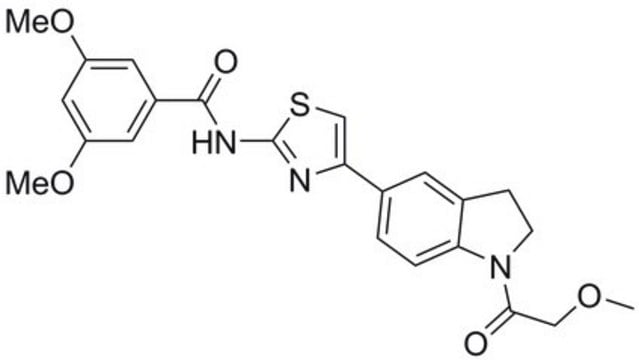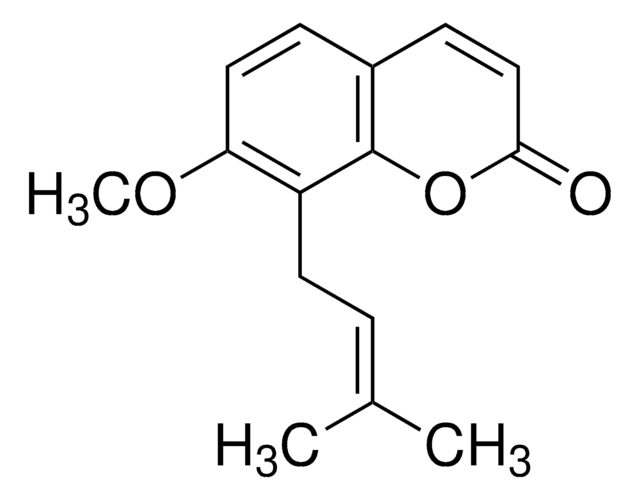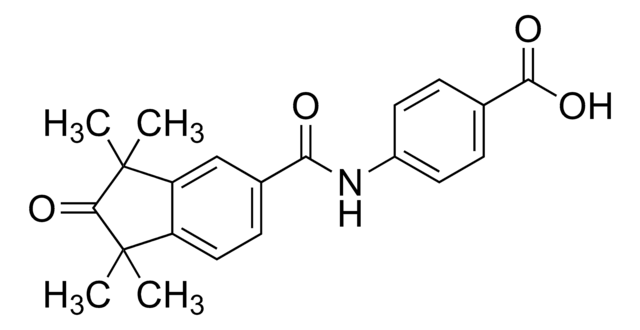SML0836
ML297
≥98% (HPLC)
Synonim(y):
1-(3,4-Difluorophenyl)-3-(3-methyl-1-phenyl-1H-pyrazol-5-yl)urea, CID 56642816, VU0456810
About This Item
Polecane produkty
Próba
≥98% (HPLC)
Postać
powder
kolor
white to beige
rozpuszczalność
DMSO: 15 mg/mL, clear
temp. przechowywania
−20°C
InChI
1S/C17H14F2N4O/c1-11-9-16(23(22-11)13-5-3-2-4-6-13)21-17(24)20-12-7-8-14(18)15(19)10-12/h2-10H,1H3,(H2,20,21,24)
Klucz InChI
IEKSMUSSYJUQMY-UHFFFAOYSA-N
Działania biochem./fizjol.
Cechy i korzyści
Hasło ostrzegawcze
Warning
Zwroty wskazujące rodzaj zagrożenia
Zwroty wskazujące środki ostrożności
Klasyfikacja zagrożeń
Aquatic Acute 1 - Aquatic Chronic 1
Kod klasy składowania
11 - Combustible Solids
Klasa zagrożenia wodnego (WGK)
WGK 3
Temperatura zapłonu (°F)
Not applicable
Temperatura zapłonu (°C)
Not applicable
Certyfikaty analizy (CoA)
Poszukaj Certyfikaty analizy (CoA), wpisując numer partii/serii produktów. Numery serii i partii można znaleźć na etykiecie produktu po słowach „seria” lub „partia”.
Masz już ten produkt?
Dokumenty związane z niedawno zakupionymi produktami zostały zamieszczone w Bibliotece dokumentów.
Produkty
We offer many products related to potassium channels for your research needs.
Nasz zespół naukowców ma doświadczenie we wszystkich obszarach badań, w tym w naukach przyrodniczych, materiałoznawstwie, syntezie chemicznej, chromatografii, analityce i wielu innych dziedzinach.
Skontaktuj się z zespołem ds. pomocy technicznej









